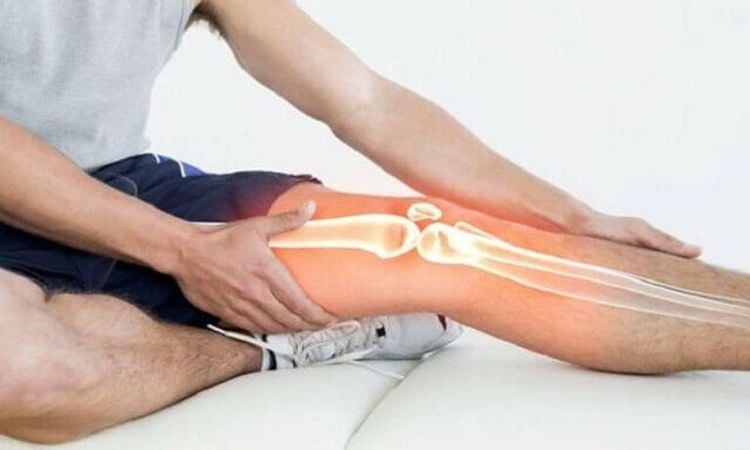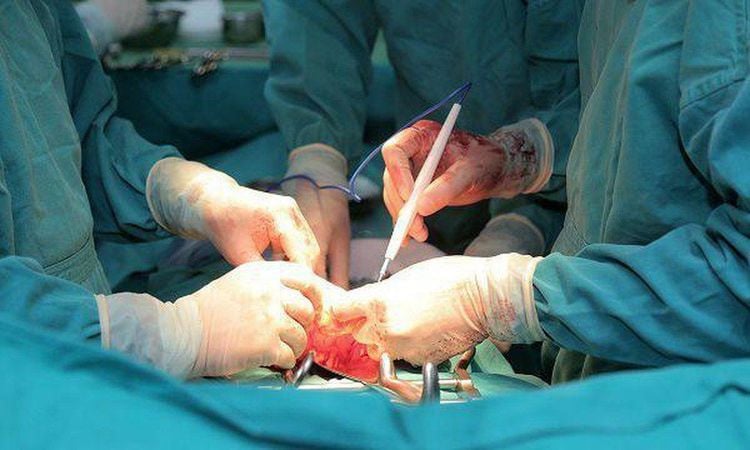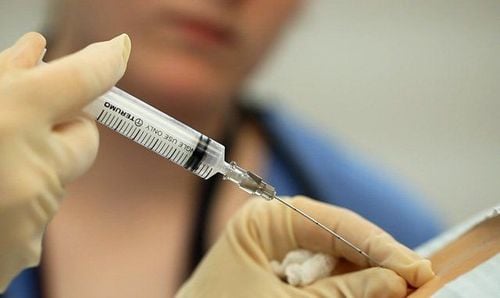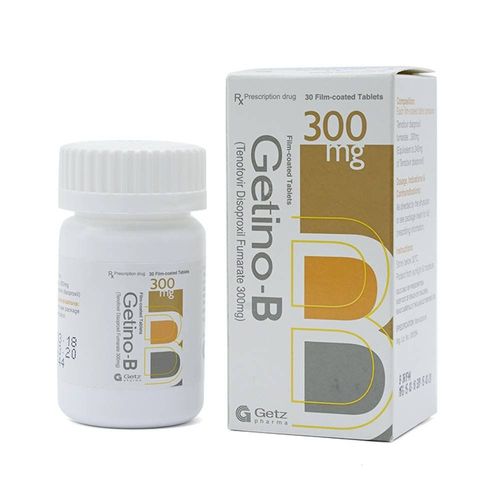This is an automatically translated article.
The article was professionally consulted by Specialist Doctor II Mai Anh Kha - Orthopedic surgeon - Department of General Surgery - Vinmec Danang International General Hospital.Thanks to the development of today's science, the technique of skin-muscle flap transfer has been and is helping victims of soft tissue injuries to avoid serious risks, including bone necrosis.
1. Serious software injury
1.1. Define
Doctors say soft tissue injuries are considered serious when:Soft tissue injury exposes tendons, bones, nerves and/or blood vessels; Injuries where tendons or bones are missing.
1.2. Consequence
This condition, if not properly treated, can lead to sequelae:Infection; Necrosis of bones - tendons, blood vessels, nerves, muscles... Deformation, contracture of motor organs; Stiffness; Loss of motor function of the limbs, greatly affecting the patient's life.

Chấn thương phần mềm gây cứng khớp
1.3. Treatment
Appropriate measures commonly used for this type of injury are:Sutures to cover the head (the wound is simply not stretched); Autologous skin graft; Rotate the flap in place; Transfer of skin flap with seamless pedicle Transfer of loose skin flap with loose pedicle (microvascular anastomosis). According to the doctor's recommendation, deciding whether to suture the skin, leave the head open or switch the muscle flap to cover the injury is very important. This depends a lot on the expertise of the surgeon. Wound assessment and wound treatment follow a low-to-high imaging scale corresponding to the complexity of the wound.
2. Skin flap to reduce the risk of bone necrosis
2.1. Role
Skin-muscle flap transfer is a difficult and complicated technique, so it can only be carried out in hospitals that specialize in plastic surgery. If successfully applied, this approach will:Provide opportunities for victims of software vulnerabilities; Reducing complications and sequelae for patients, including the risk of bone necrosis; Cover exposed tendons, bones, nerves and/or blood vessels; Reduce the number of surgeries; Early recovery of anatomy and organ function. Skin flap surgery plays an important role in the treatment of soft tissue defects, especially in less soft spots such as the lower third of the leg, the heel, as well as the instep.
2.2. Front thigh flap
Recently, the anterolateral femoral flap is the most widely studied and widely used perforating flap in the field of plastic surgery in general and limb reconstruction in particular, especially in one-stage reconstruction of complex defects. . The flap has many advantages such as:The peduncle is long and quite constant; The diameter of the lumen is relatively large; Large tissue volume, few sequelae of the flap site. There are studies that know that the anterolateral femoral flap is used flexibly, both in the form of a peripheral pedicle, and as a free flap with a high success rate. With preoperative identification of perforating vessels by Doppler and intraoperative comparison with high coincidence. The free anterolateral femoral complex flap will apply well in cases of multi-component defects in lower extremity tissues.
2.3. Result evaluation
Evaluation criteria:Based on flap survival: flap color, flap capillary reflux and Doppler auscultation; Injury status at the site of flap taking and receiving: The results will be divided into 4 levels of good, medium, bad and failure; Function and aesthetics: The aesthetic recipient is suitable for the shape, does not ulcerate, does not leak inflammation. The place where the scar is removed is soft, the quadriceps muscle contraction strength is strong, joint movement is normal. With the above criteria, the surgical results will be considered good if the flap color is pink, the flap capillary return is good and the pulse is clearly doppler auscultation. Conversely, if the flap is purple > 50%, the capillary return is poor, and the pulse auscultation with doppler is difficult or invisible, the surgery has poor results.
3. Example of two cases of skin flap transfer
3.1. The method of transferring skin flaps with seamless stalks, treating two shin bone fractures
Case 1, the patient had a traffic accident with a contusion of the spleen, an epidural hematoma, an open fracture of III B, the lower third of the two lower leg bones.After 3 weeks of conventional treatment, the patient was continued to receive treatment for shin fractures. Doctors will perform 3 surgeries:
Excision, external fixation; Cut filter, set VAC; Skin flap surgery with seamless pedicles The results are very satisfactory with good skin flaps.

Quy trình phẫu thuật dựa vào tình trạng bệnh của bệnh nhân
3.2. Surgery to transfer muscle skin flaps with stalks, creating hand skin defects
Case 2, the patient was admitted to the hospital with:Soft tissue wounds in many places; The left forearm has 3x4cm skin defect, exposed tendons and muscles; Movement of the left fingers is limited. Skin-muscle flap surgery is the optimal method to be given, to help preserve the mobility of the fingers, and at the same time to ensure the aesthetics of skin defects for the patient.
Steps to take:
Take a flap of muscle skin in the right wrist area (with pedicle and vein branch), bring it over to cover the skin defect of the left forearm; Next is dissection, take vein in right leg, reverse graft to restore radial pulse to the victim's left arm; The entire surgery took place under a microscope, lasting more than 2 hours. After successful surgery, the patient's condition was recorded as follows:
Good progress; The flawed skin is replenished, ruddy; The incision is dry; All hand movements are guaranteed to work properly. In addition to implementing hip replacement surgery, endoscopic ligament reconstruction, and bone fusion, a number of plastic surgery techniques to treat malformations and sequelae due to trauma, including skin flap transfer, are also used by the disease. Vinmec International General Hospital has focused and developed in recent times.
With more than 22 years of professional experience, Doctor Mai Anh Kha used to hold the position of Head and Deputy of Department of Surgery - Plastic Burns at Hue Central Hospital and worked at other large medical units such as Da Nang Hospital, Traffic Hospital 5. Currently, he is an Orthopedic Surgery Doctor - General Surgery Department - Vinmec International General Hospital Da Nang.
To register for examination and treatment at Vinmec International General Hospital, you can contact Vinmec Health System nationwide, or register online HERE.














